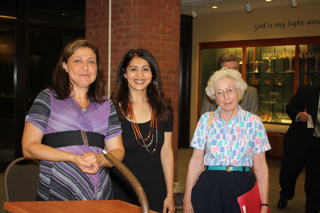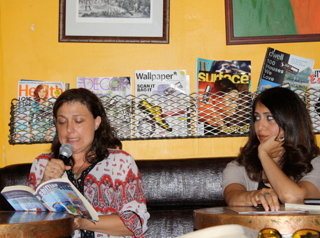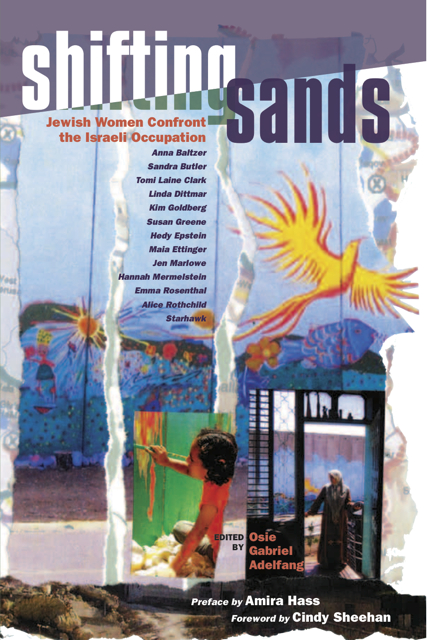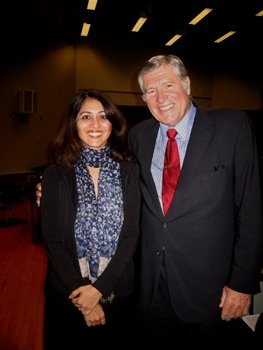most excellent letter from my friend richard myers: “We will not stand for attacks on the principle of religious liberty. We will not sit by when our Muslim neighbors are threatened. We will not be silent when good people are characterized as terrorists. We will not be still when politicians disregard the Constitution and label people unjustly. Therefore, we appeal to our silent neighbors: speak up gently if you can, firmly if you must. Engage your neighbors to dispel uninformed stereotyping of Muslims. Learn all you can about Islam. Enter into interfaith conversations. Memorize the opening words of the First Amendment of the Constitution: Congress shall make no law respecting an establishment of religion, or prohibiting the free exercise thereof.” Complete letter.
Category: local
Pakistan Flood Relief Fundraising Dinner – October 3, 7pm @ Turkish Society of Rochester (677 Beahan Rd)
Over 18 million people affected. Over 1 million houses damaged. Almost 3,000 injured and 2,000 dead. The statistics are overwhelming, and the situation is one that calls for our help.
Here’s what you can do:
Attend the event:
Tickets are $15 each, and WILL NOT be sold at the door. To reserve, call the ICR at 442-0117. The program includes dinner; speeches by Mayor Robert Duffy, Brighton Supervisor Sandra Frankel, and Dr. Ismail Mehr, who traveled to Pakistan to aid in relief efforts; and silent and podium auctions. All profits go towards relief efforts, so your donations will be put to good use.
Volunteer:
We need volunteers to serve food to tables and babysit. If you are interested in doing either of those, write on the event wall and tell us what you can help out with. All volunteers will receive free dinner, but we can only accept 15-20 people, so you must let us know beforehand.
Publicize:
Tell your family, friends, professors, coworkers, and anyone else you know. The event is open to the entire Rochester community (Muslims and non-Muslims), and the more people we can get to attend, the more money we can send to aid the flood victims.
We encourage you to get involved; this is one of the worst disasters that has ever affected Pakistan, and it is a project that requires as much participation from the community as possible.
“shifting sands” reading at temple brith kodesh
“shifting sands: jewish women confront the israeli occupation” – reading at temple brith kodesh, aug 4, 2010. from L to R: israeli-american writer and editor osie adelfang, myself, activist emma rosenthal’s mom.

shifting sands: jewish women confront the israeli occupation
osie adelfang, editor of the groundbreaking anthology “shifting sands: jewish women confront the israeli occupation” comes to rochester. first book reading at java’s on aug 3rd 2010.

Rochester Shifting Sands Events
Rochester native and book editor Osie Gabriel Adelfang will discuss this groundbreaking anthology of Jewish women’s anti-occupation voices (including Anna Baltzer, Starhawk, and 12 others; forward by Cindy Sheehan, preface by Amira Hass). Ms. Adelfang will talk about how the book came to be, read excerpts, touch on recent events and discuss what Americans, Jewish and non-Jewish, can do to promote peace, justice and democracy in Israel/Palestine. She will then answer questions and sign first-editions of the book. This event is being sponsored by Rochester-based interfaith group, Faith to Faith.
Java’s Café
Location: 16 Gibbs St., Rochester, NY Date: 8/3/2010
Time: 6:30 p.m.
Temple Brith Kodesh
Location: 2131 Elmwood Ave, Rochester, NY Date: 8/4/2010
Time: 7:00 p.m.
Praise for Shifting Sands:
“[The writers] powerfully articulate, in their different ways, the axiom of our common humanity. It may have taken our whole life to reach that place (as one contributor put it), but those who are finally able to see, must stand up and advocate for sanity now, today.”
(Deb Reich, translator, Abu Ghosh, Israel/Palestine)
“From the opening pages about a … prayer on doubt, through each and every one of the personal accounts, readers feel the wisdom of women on every page, as well as a deep sense of love for humanity—all humanity.”
(Sam Bahour, Co-Editor of Homeland: Oral Histories of Palestine and Palestinians)
Check out book website here.
Facebook Event here.
Publisher: Whole World Press
Who to contact: Laurieann Aladin, aladin@wholeworldpress.org

Rochester area ranked third-best to raise a family
The Rochester area has been ranked the third-best metropolitan region in the country for raising a family by Forbes magazine.
The business magazine compiled the list from seven criteria applied to the nation’s metropolitan statistical areas: cost of living, prevalence of home ownership, median household income, housing costs, commute time, crime and high school graduation rate. The statistics were taken from the federal government and Moody’s Economy.com.
The Rochester area scored particularly well in the cost of living and commuter rankings. Full article.
eboo patel talks about interfaith leadership in rochester – my take
dr eboo patel spoke at the 2010 interfaith conference here in rochester last evening. my husband and i had been invited to his talk followed by a private dessert reception in order to meet him one on one. dr patel is the founder and executive director of the interfaith youth core and is a member of president obama’s new faith advisory council. i already knew him from some of his writing. i was excited.
dr patel spoke about his passion, his belief in interfaith. he is especially dedicated to the idea of creating interfaith leaders – young people who will take us into a future of pluralism and mutual respect. he listed 4 global trends which make interfaith leadership a priority:
1) religious revival throughout the world
2) youth bulge: most of the world’s population consists of young people
3) media ubiquity because of which people who are vastly different are now being flung together
4) global socio-economic breakdown which is creating high levels of unemployment/underemployment and frustration
the bad news, he said, was that those who have been able to recognize and exploit the energies b/w these trends are extremists – large numbers of young people are being mobilized by strong extremist movements that are sweeping the world.
however, the good news is that these extremist movements can be deconstructed and replaced with pluralistic social models. this is where young interfaith leaders come into the picture. they can transform religious diversity to plurality, not conflict. they can make a positive engagement with difference possible. since leaders define reality, it’s important to get the vision right. young interfaith leaders can be trained to use their knowledge base and vision to offer the world another paradigm. interfaith projects would be a big part of this new world-view, this new engagement.
throughtout his speech dr patel invoked martin luther king jr. he sees him as the ultimate blueprint for interfaith leadership. MLK was obviously inspired by his christian faith but also by gandhi’s nonviolent resistance in india. dietrich bonhoeffer, the lutheran pastor who stood up to the nazis and was involved in an assassination attempt on hitler, is also one of patel’s interfaith heroes.
altho patel reveres these larger-than-life, courageous men (MLK, gandhi, bonhoeffer), he fails to understand that their work was strongly anchored in politics. they weren’t just talking about plurality, they were demanding it by asking for justice and equal rights for all and they were willing to risk their lives for such radical demands. if these are the men we must be inspired by and emulate then we must be brave enough to engage in politics and ask for equal human rights for all. u cannot separate MLK from the civil rights movement or gandhi from the quit india movement. if this is what we require from interfaith leaders then how can we not talk about american wars and occupations, about guantanamo, about extrajudicial killings courtesy of drones?
in his speech patel made the argument that all extremists (whatever their religious denomination) belong to the same religion – the religion of extremism. during Q&A a couple of students revisited that concept. one of them asked patel to elaborate on what he meant by that and also if it wouldn’t be more appropriate to view such extremists not as belonging to a separate cult but as being part of the human race, like the rest of us. patel’s answer was quite definitive. he said that some people are enemies of pluralism and they need to be put away. as an example he cited someone who would throw acid in a little girl’s face because she went to school. u can’t talk to such people. they need to be destroyed.
i found it interesting that this example, altho horrific and certainly heinous, fits the american govt’s narrative of brutality and barbarism originating mainly in the third world. there is no context of how the brutalization of a society as a whole can affect its internal structure, family dynamics, or gender issues. there is no mention of secular barbarism such as the use of white phosphorous and depleted uranium on civilian populations. i read an interesting article where the author argued that the use of depleted uranium is in fact slow genocide on account of how it curtails the growth of “unwanted” populations. i longed for more context, for more balance, for more honesty, for more reality.
to me the entire premise of global conflicts stemming from “religious revival” is problematic. one of the students in the audience said as much. he asked patel to comment on how even tho people might use religion as a rallying cry, their struggles are about other political or socio-economic issues. patel never addressed that question.
what really put me off tho was that towards the end of his speech, patel raised obama to the level of MLK and gandhi, presenting him as the new interfaith global leader of our time. what gall i thought, how misguided. but then patel went further – he mentioned clinton, he mentioned tony blair. that was it. i told my husband we should leave and forgo the private dessert invitation with patel.
no, i’m not rancorous. i don’t hate eboo patel. he is young (still in his 30s) with an already impressive bio. he is good looking, immensely articulate and speaks beautifully – with a voice and cadence that are nothing short of mesmerizing. it’s impossible not to acknowledge the man – his calm, his knowledge, his seeming truth. frankly, he’s a lot like his boss, like mr obama. and their tragedy is also the same: with all their gifts, they’re still very much part of the system. they ain’t no MLK.
apr 12, 2010
rochester, ny
Activists come to Fisher, speak out on Iraq war
Activists, bloggers, poets, musicians and concerned citizens gathered in Basil 135 on Feb. 12 for the eighth annual Poets Against the War readings. Frank Judge, president of Rochester Poets and a St. John Fisher alum, organized the event. The P.A.W. movement started in 2003 as a response to former President George W. Bush’s invasion of Iraq. People channeled their outrage with the government into writing and created what is now the largest poetry anthology ever published. Rochester is one of the few cities in the country with an unbroken record of holding P.A.W readings. “I’m disappointed by the small turn-out,” said filmmaker and first-time performer Mara Ahmed. “It seems like there’s hardly any acknowledgement that our country’s at war.” Full article.
Operation Care Rochester – to help people in Afghanistan
Finally a chance to do something concrete to help the people of Afghanistan!
Pls join us Friday, February 26, 2010, 5:30 to 9:30pm
at TRIBECA NIGHT CLUB, 233 Mill Street, ROCHESTER, NY
$10 Donation
For More information and sponsorships visit: www.operationcarerochester.org or contact Julie Behlok: (585) 321-9777, jbehlok@gmail.com.
Rep.Eric Massa will keynote this special event to raise money and collect supplies for the children of Afghanistan displaced by war. Proceeds will benefit the BAYAT FOUNDATION, www.bayatfoundation.org. Donated goods will be shipped thru OPERATION CARE.
hearings at rochester city council: police brutality on oct 7, 2009
oct 13, 2009
went to the hearings at rochester city council today. the subject: police brutality on oct 7th 2009, the 8th anniversary of the afghan war, when a peaceful protest was violently attacked by police in the city of rochester.
some 25 people spoke. about 2 minutes each. the speakers were well organized, most kept to their allotted time. the speeches were rousing, eloquent, from the heart. there was a strong sense of community – the room was full, there was thunderous applause, and a sense of “we are all in this together.”
in the speeches, there was frequent emphasis on racism within the ranks of the rochester police dept. many felt that the media attention given to this particular incident was a sad testimony to this fact. someone compared the police force to a hammer that’s used to hitting black nails. the reason why we were even having these hearings was because this time some white nails had got hit. the first person to be arrested at the protest was a black student, an onlooker who had just joined the march.
a woman talked about a “thirst for blood” – american soldiers brutalizing others around the world and the police brutalizing us here at home.
people described the attacks on protesters – a young woman’s face was shoved into a lamp post and she started bleeding from the mouth. other people’s faces were bashed into the ground. it felt like a police state.
dawn zuppelli, an indymedia journalist who captured most of the footage that exposed police violence after her colleague was wrestled to the ground and arrested for filming, spoke eloquently about how the mainstream media were notoriously missing from the scene but found it convenient to criticize the “quality” of indymedia’s video evidence. the media were criticized for simply repeating the police line without any investigation or any effort to incorporate the other side of the story.
two black men spoke about the constant fear their community has to live with in the city. one of them said he was speaking out but was in mortal dread of the backlash this could mean for him and his family. a war veteran talked about how he had been sent to war to uphold the u.s. constitution but the police had failed to do that same thing on october 7th. a teacher’s voice shook as she explained how after this incident she had lost her trust in the system.
SDS’s jake allen reiterated the protest’s three demands: getting out of afghanistan, redirecting funds away from the war and into domestic priorities like education, and demilitarizing city schools (aggressive military recruitment found in city schools is simply missing from suburban school districts like brighton and pittsford). he said that it was clear that the power of love and community was possible – “we are that power.”
a mother who had taken part in the protest carrying her baby on her back, said that being in the street was not, in and of itself, an act of violence. similarly, upholding the law should not automatically imply an act of violence. someone said: “what is worse? war or the lack of a permit?”
charges were also made that the police were spying on an SDS meeting on october 8th, video taping participants and noting down number plates.
people decried the police’s racism and disdain for civil rights. they said that they would wait and watch. the city council was urged to take action against police brutality, find out who ordered it, and drop all charges against those who were arrested.
Rochester police, anti-war protesters clash
the mainstream media account of police brutality in rochester is totally skewed: (1) there weren’t 100 protesters, there were probably 50, (2) the firetruck was not blocked as clearly shown in the video, (3) the police was never attacked, (4) there is clear video evidence of unnecessary, excessive force used against peaceful protesters. Article in the D&C.
“Funk the War” Protest Attacked By Police!
Freedom of speech? Freedom of assembly? Is this democracy or fascism?
“Without warning, the police officers moved in and started attacking demonstrators. They were armed with clubs and riot sized canisters of pepper spray. Approximately 10 of the protesters were arrested. Several others went to hospitals to seek treatment for injuries caused by the police action. The first demonstrator who was arrested was an African-American male. After his arrest, several demonstrators made comments relating to the racism frequently displayed by the Rochester Police Department. At least one of these demonstrators was also arrested.”
funk the war – 8th anniversary of the afghan war – oct 7th 2009
anti war rally in rochester, ny, on the 8th anniversary of the war in afghanistan. later during a peaceful march, rochester police attacked 60 protesters with clubs and pepper spray. some were arrested, others had to go to a hospital to get treatment for injuries.

sept 13: celebration party for publication of “paternity”
my friend sue baruch is the proud author of paternity, out in paperback now! buy it here.
“Joel Berger’s charmed life is fast slipping away. Determined to father a child before he dies, Joel makes one desperate appeal to the women of his macrobiotic dinner group for help. Soon he is surrounded by a colorful cast of female characters, including his iron-willed yet oddly endearing mother, Sylvia. You’ll laugh and cry along with the Bergers as the story of their patchwork family begins to unfold, taking some deliciously unexpected turns along the way.”

“war is not the answer: a personal odyssey”
with dr robert bowman, at hobart and william smith colleges, geneva, sept 3, 2009 – “war is not the answer: a personal odyssey”
Dr. Bowman, who has a Ph.D. in Aeronautics and Nuclear Engineering from Caltech, flew 101 combat missions as a fighter pilot in Vietnam, after which he became Director of Advanced Space Programs Development for the Air Force Space Division. In that capacity he oversaw the then secret program to study missile defenses, which President Reagan later turned into the Strategic Defense Initiative (SDI), or “ Star Wars.” He has become a powerful anti-war voice within the progressive community – active with Veterans for Peace, and Vietnam Veterans Against the War. He has opposed both wars with Iraq, the war in Afghanistan, as well as the military operations in Bosnia and Kosovo.

